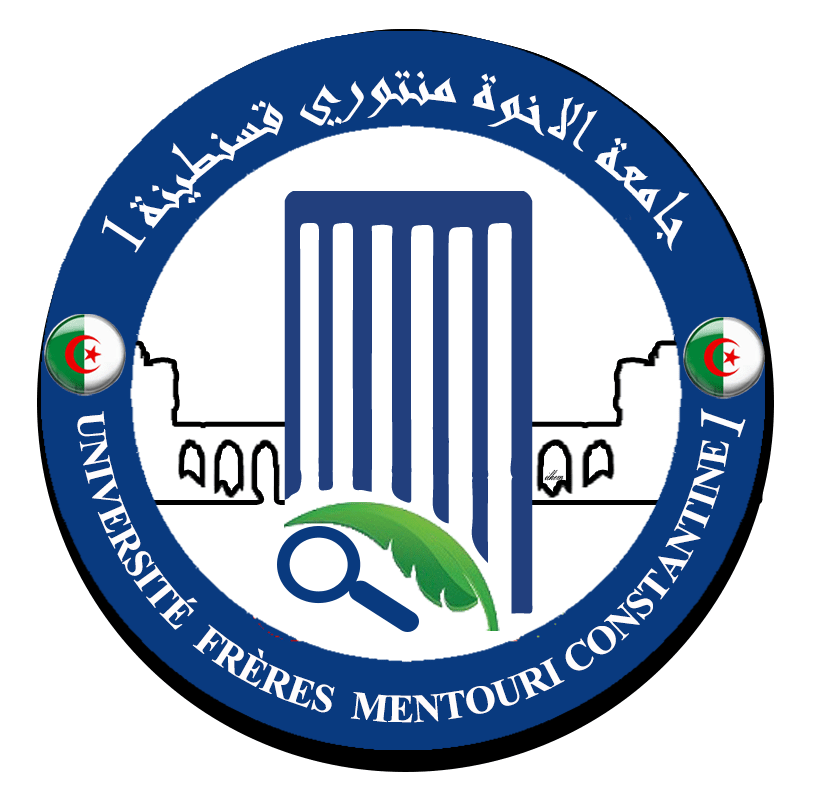المصطلح والأسلوب رواية 'الحصن الرقمي' لدان براون ترجمة فايزة غسان المنجد أنموذجا
Résumé: "The subject of this dissertation, which is part of translation analysis and criticism, aims to study what could be described as the translation from English into the Arabic of a science fiction novel from two different angles, one terminological and the other stylistic. The concept of the science fiction novel derives from two divergent universes: fiction and science, a matter that might complicate the process of translation. The problems faced during translation of literary texts depend on socio-cultural context. The literary text is characterized by intensive use of connotative expressions that require the translator to re-express them according to the target language context requirements. In other words, the translator should keep safe the semantic content value of the departure text while reformulating the intentions of the author in an artistic and creative way into the target text in order to keep the main function of the literary text, the aesthetic function. Conversely, the technical text is much easier to translate into the target language. However, considering that the literary text deviates to use scientific and technical terms is far from being practically acceptable, because the evolution of any society affects all fields; including literary production and this is what science-fiction is all about, a genre probably not well popular in Arab societies. 155 Distinguished by its scientific aspect, as its name suggests, the science fiction novel stands upon scientific theories and evidences to offer authors the opportunity to rebuild imaginary worlds depending on knowledge that belongs neither to the wonderful nor to the religious, but to the scientific speculation, even if it violates the principles of our current one. The translation of the science fiction novel, as a literary genre relatively more recent than poetry, is a part of literary translation, although it is different from other literary texts by the omnipresence of the technical specialized terms, and sometimes the neologism. Thus, it represents a specific type of literary texts, a mixture of both literary and technical texts, which makes the act of translating more complex and difficult. Therefore, the translator should on the one hand, take care of the connotative and aesthetic side of the work during the transfer of stylistic features of the source text. On the other hand, he should be clear and concise in the translation of scientific and technical terms, as well as in the transfer of information provided by the source. This hypothesis led to focus, in this study, on the problem of translating the science fiction novel and to wonder how it could keep its dual nature; literary and scientific, while being translated from one language to another, namely from English into Arabic. We try, throughout the research, to answer the issues raised above, and to highlight the main concepts of translation and science fiction literature. We propose to study the novel ""Digital Fortress ""of the American writer Dan Brown, a bestseller in America and worldwide. First, because it is of the class of ""techno thrillers"", a sub-category of science fiction novel, in addition, this work is distinguished by its narrative, suspense and scientific speculations that run throughout it, drawing from computing, telecommunication, cryptology and political status quo. It, thus, offers a good corpus for a research. 156 This work has been translated into more than fifty languages, including its Arabic version, which was published in 2005, seven years after its first edition, by Arab Scientific Publishers under the title of “Al Hisn Arrakmi”, translated by Faiza Ghassan Al-Moundjid. Our choice to this translation was not arbitrary, but it was so because this version represents the only translation available in the Algerian libraries. This research work is divided into three chapters, besides the introduction and conclusion. The first two chapters deal with the topic from its theoretical side, while the third one examines the practical side. The method adopted in this work focuses on the analysis, especially semantic and stylistic, and the criticism based essentially on the confrontation of the translated text to the original one. Chapter 1: Concepts of Translation Studies in Relation to Terminology and Stylistics. In this chapter, we study the basic concepts of translation and its relationship with the term and style. We discuss first of all, the notion of translation in order to draw a distinction between practice and translation as a science studying theories and approaches that may facilitate the understanding and guidance of that practice. Then, we mention the two basic ways to translate, that of those who attach importance to the source language: ""Les Sourciers"" and that of those who cling to the target language: ""Les Ciblistes"". Moreover, we spread out, in some details, the main theories and approaches that have marked translation studies in the 20th century following a classification based on ideologies and trends. We have also made clear the difference between the literary and the technical translations and the main points of divergence between both types. We also discussed the relationship translation/term and translation/style. As regards to its relationship with the term, 157 we have tried to highlight the problems of translation related to terminology, after marking the boundaries between the concepts of “terms”, “terminology” and “terminography”. About the relationship translation/style, we have first treated the binary ‘style and stylistics’ with all notional differences that may include, as a prelude to deal with the stylistics influence on translation studies and forecast, therefore, the problems related to the transfer of stylistic features. Chapter 2: Concepts of Science Fiction in Relation to Literature and Translation. The second chapter deals with general concepts of science fiction and its relationship to literature and translation. It is introduced by an overview of speculative literature history, its different eras, from its origins until today, and the main precursors who have paved the way to this genre. Then, the chapter outlines a set of specific science fiction definitions established by both Western and Arab experts in the field, so that we could understand its concept and pinpoint, thereafter, the main points that distinguish it from the fantasy literature which is, often, blindly classified under its label because of the enormous resemblance they show. In addition, this chapter discusses the structure of the science fiction novel as well as its artistic features in order to draw boundaries that separate it from other fiction novels. We discuss, then, its status in the world of literature, including Arabic, on the basis of different views of several specialists, authors and critics. Finally, the chapter tries to point out all the problems and constraints that might hinder the process of translating the science fiction novel from English into Arabic language, referring to its dual nature: literary and scientific. 158 Chapter 3: A Critical and Analytical study of ""Al-hisn Arrakmi"", the Arabic Version of Dan Brown's Novel."" This chapter provides a critical analysis of a set of samples, concerning styles and technical terms drawn from the novel in its Arabic version by Faiza Al-Moundjid. The chapter opens with a synopsis of the novel to better locate and understand the context of events developed over the story. This is followed by a biography of the author about his life, his literary career, and the socio-cultural and scientific conditions that have influenced his choices and fancies while writing the novel. These elements are of a paramount importance, they facilitate not only the reading process but also the understanding of the text and its hidden socio-cultural and scientific references. Concerning the practical study, we divide the work into two parts. The first one is devoted to study the translation of technical terms proposed by the translator, regarding to a few examples from the corpus. It is to examine the choice of translator according to the mechanisms and criteria of the term ‘creativity’; comparing the translated technical term with all terminological substitutes available in the target language, referring to specialized lexicons and dictionaries. The second part is devoted to study some models and to illustrate each of them with different stylistic feature in order to determine how stylistic features of the source text are transferred into Arabic, in the light of specific studies about stylistics and translation done by Ghazala (2004), especially on the concept of stylistic equivalence that he proposes. Beyond that, we try to analyze and interpret the act of translation from the standpoint of the seven processes of translation proposed by Vinay and Darbelnet. 159 Finally, we try to resolve the issues raised previously. We also propose a series of important observations and recommendations in the light of which the translator might overcome potential difficulties and accomplish his task properly."
Mots-clès:
Nos services universitaires et académiques
Thèses-Algérie vous propose ses divers services d’édition: mise en page, révision, correction, traduction, analyse du plagiat, ainsi que la réalisation des supports graphiques et de présentation (Slideshows).
Obtenez dès à présent et en toute facilité votre devis gratuit et une estimation de la durée de réalisation et bénéficiez d'une qualité de travail irréprochable et d'un temps de livraison imbattable!


